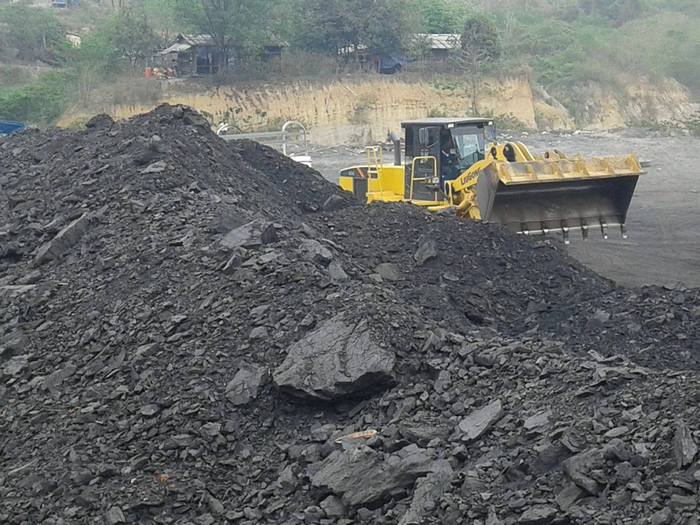A heavy military offensive launched in Shan State’s Hsipaw Township in May was a direct result of the army’s aim to control territory near the Nam Ma coal mine, claims a report released this week by the Shan Human Rights Foundation (SHRF).
The report, titled “Killing for Coal”, also alleges that units from Burma’s military engaged in a range of serious human rights abuses against local civilians in the area, including arbitrary arrest, torture and extrajudicial killing, during the army’s drive to seize territory from a longstanding Shan armed group.
The coal-mining operations at Nam Ma are run by the Ngwe Yi Pale company, which controls a 70 percent stake in the project. The firm’s partner, the state-owned No. 3 Mining Enterprise, has the remaining 30 percent.
The Ngwe Yi Pale company is one of Burma’s leading producers of sugar and cement. The firm’s biggest owner, according to information disclosed earlier this year in Burma’s Extractive Industries Transparency Initiative (EITI) report, is a businessman named Thein Myint (also known as Chaung Hpin), who holds a 43.55 percent stake in the company. According to the EITI report, a second person named Myint Shein, owns 29.20 percent of the company.
The coal mined at Nam Ma is said to power Ngwe Yi Pale’s energy-intensive production operations at Nawng Khio in Shan State and in Mandalay.
Local villagers have for many years complained that mining at Nam Ma has destroyed farmland and severely contaminated local water sources, in particular in the villages of Pieng Hsai and Wan Long. Since it began mining in the area in 2004, Ngwe Yi Pale has expanded its operations, despite strong opposition from affected farmers.
Much of the area around the mine site had been for many years the territory of the Shan State Progressive Party (SSPP), also known as the Shan State Army-North (SSA-North), an ethnic Shan armed group. Although the SSPP signed a bilateral ceasefire agreement with the central government in 2012, it did not sign on to last year’s National Ceasefire Agreement (NCA). Positions held by the group throughout Shan State have over the past year been on the receiving of repeated army attacks.
According to SHRF, Burmese army troops launched an offensive against three SSA-North camps south of Nam Ma on 18 May. SHRF, which describes the offensive as using 500 troops from four army battalions and their militia allies, concludes that the offensive was clearly related to the mine. The attack took place one day after senior SSPP officials traveled to Nam Ma to meet villagers who were upset with pollution caused by the coal mining operations and alleged land-grabbing by Ngwe Yi Pale.
“There is thus no doubt that a main aim of the offensive was to safeguard the mining operations. The Burma Army and their militia have now secured control of areas around the mines, including coal transport routes,” the report states.
[related]
SHRF also alleges that two government-backed militias, known as Pyithusit in Burmese, aided the army in its effort to secure territory near the mine. The larger of two militias is the Manpang militia led by Bo Mon (also known as Sai Mon), a veteran of the Khun Sa’s Mong Tai Army (MTA). The other is a Lahu militia based east of the mining area at Nam Ma Paw Ta village.
The SSPP, which is headquartered at Wan Hai, was completely driven out of the Nam Ma area as a result of the offensive, according to SHRF. During the offensive, a 25-year-old civilian named Sai Saw Ling from Wan Ho Tui village was shot by army troops while riding his motorbike through Teung Hai village; he was later beaten to death with a rock by a soldier, according to a witness interviewed by SHRF. That same day, a 34-year-old deaf and mute farmer named Sai Sarm Tun was shot and killed by army troops at his farm close to Tueng Hai village, according to another witness interviewed by SHRF.
SHRF also alleges that Loong Aw Aung, a headman from Wan Long Nam Ma village, was arrested on 18 May by a group of soldiers at Ho Loi Pieng Hsai who accused him of “giving information to Shan soldiers” using a radio transceiver that they they found in his possession. According to villagers interviewed by SHRF, the 51-year-old has not been seen or heard from since he was arrested. SHRF researchers found that an additional 13 villagers were arrested and subjected to beatings and “tied up like animals, and forced to be porters.”
The offensive, which SHRF says involved “shelling and aerial bombing near civilian areas” and helicopter gunships, forced more than 1,000 villagers in the area to flee their homes. It is alleged that after the villagers abandoned the area, Burma army soldiers “looted and destroyed most of the household property” in three different villages, Na Taw, Teung Hai and Kho Nang Pha.



